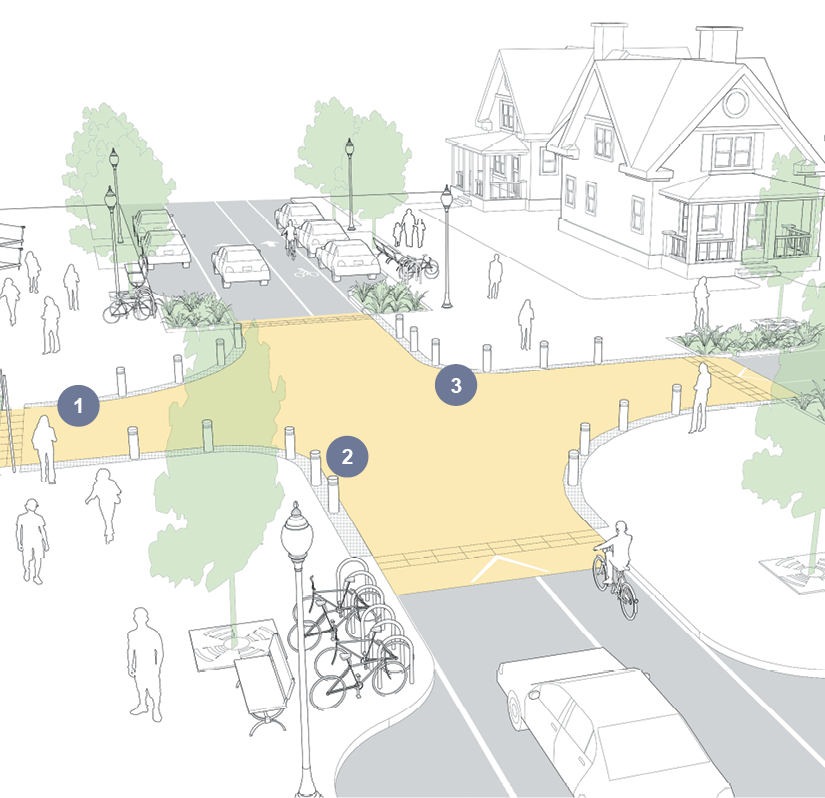Raised intersections create a safe, slow-speed crossing and public space at minor intersections. Similar to speed humps and other vertical speed control elements, they reinforce slow speeds and encourage motorists to yield to pedestrians at the crosswalk.
Recommendations

1Raised intersections are flush with the sidewalk and ensure that drivers traverse the crossing slowly. Crosswalks do not need to be marked unless they are not at grade with the sidewalk. ADA-compliant ramps and detector strips are always required.
2Raised intersections (and mini roundabouts) with yield control are preferred to signals on low-speed (<20 mph) and low-volume (<3,000 ADT) streets, as well as some moderate volume streets in 30 mph zones. STOP signs should be used instead of YIELD signs if there are concerns that drivers might ignore the pedestrian’s right-of-way. Raised intersections help reduce vehicle speeds and crash risk while simultaneously reducing unnecessary delay to motorists and bicyclists.
3Bollards along corners keep motorists from crossing into the pedestrian space. Bollards protect pedestrians from errant vehicles.
4Where two 1-way streets intersect, there will be two corners around which no drivers turn. This can be designed with the smallest constructible radius (approximately 2 feet) as long as a 40-foot fire truck can make the turn without encroaching upon the sidewalk.